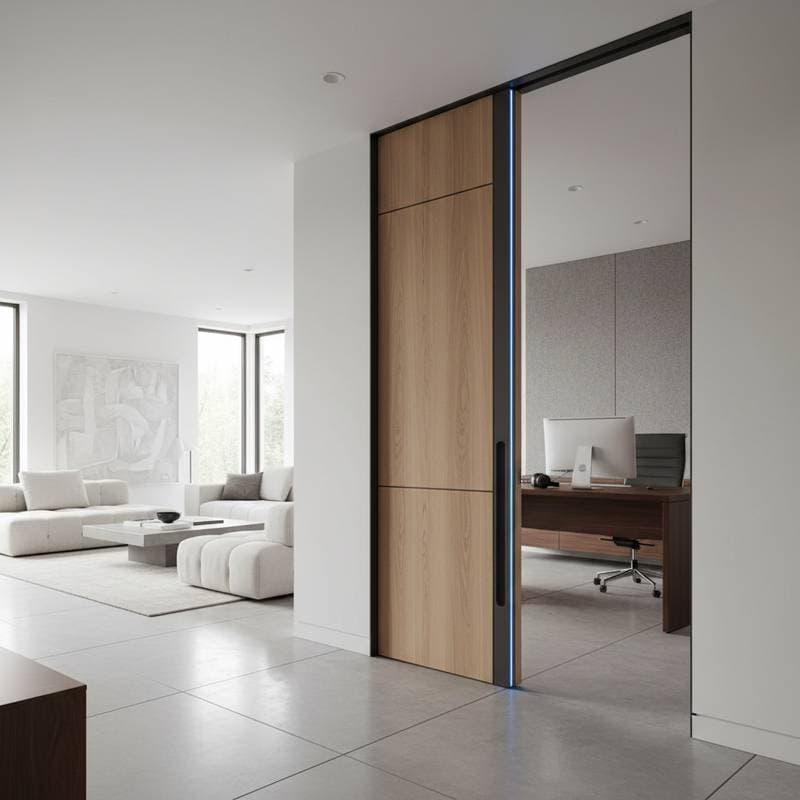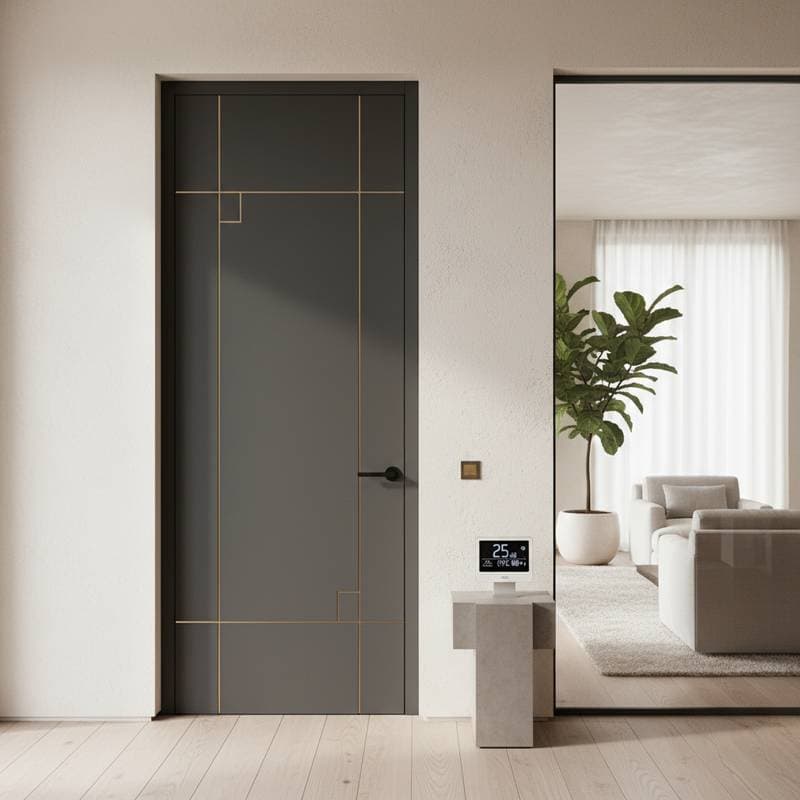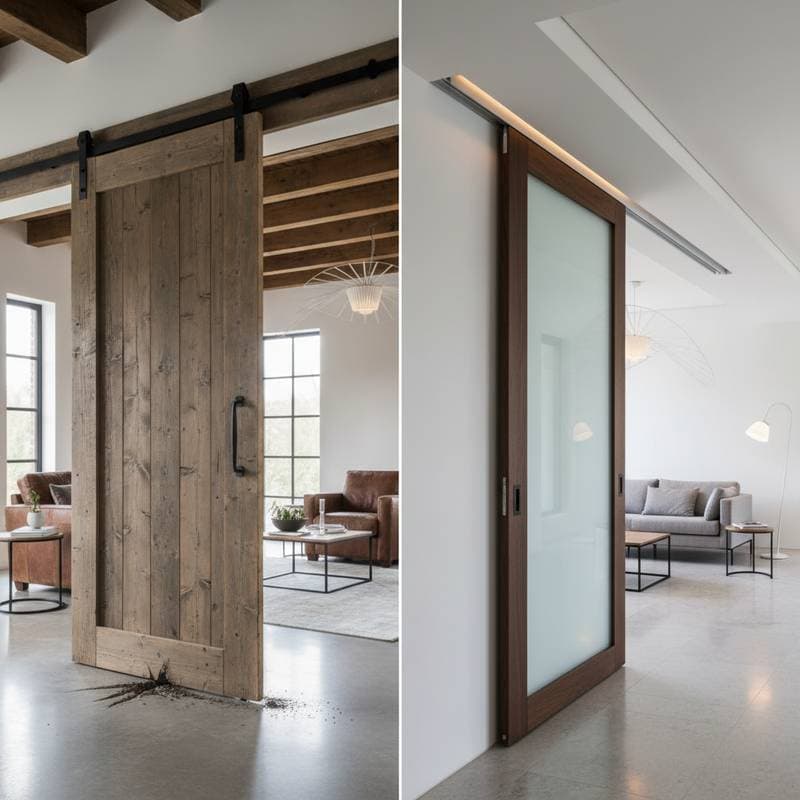Japandi Sliding Doors: Transforming 2025 Homes by Replacing Walls
Open floor plans offer expansive feelings, yet many homeowners seek ways to delineate spaces without resorting to fixed barriers. Japandi sliding doors emerge as an ideal choice for achieving flexibility, elegance, and cohesion in residential environments. This design philosophy merges Japanese minimalism with Scandinavian restraint, delivering a sophisticated equilibrium between seclusion and accessibility that aligns with contemporary lifestyles.
Grasping the Japandi Aesthetic
Japandi merges the precise lines and organic elements of Scandinavian design with the serene, equilibrated essence of Japanese influences. The outcome produces an ambiance that radiates warmth without excess. Applied to sliding doors, this aesthetic prioritizes seamless movement, subtle frameworks, and authentic surfaces. Boundaries thus appear gentle and versatile, avoiding the rigidity of conventional partitions.
This style appeals to residents of varied home sizes. In compact studios, a sliding door separates sleeping areas from dining zones; in expansive residences, it serves as a mutable divider. Such elements promote intentional space utilization and enable functional shifts across daily routines.
Selecting Materials and Design Options
Japandi sliding doors typically incorporate wooden frames paired with paper, glass, or lattice panels. Variations in materials influence ambiance and seclusion levels.
- Wood paired with glass permits light transmission while establishing distinct spatial boundaries.
- Frosted or patterned glass ensures discreet division without enclosing areas.
- Natural wood featuring fabric integrations imparts a sensory, inviting quality that enhances subdued palettes.
- Bamboo or rattan accents introduce dimension while upholding the innate Japandi ethos.
Wood finishes prove equally vital. Pale oak, ash, or birch accentuates Nordic luminosity, whereas richer walnut or cedar infuses the stabilizing depth associated with Japanese traditions. Selections hinge on desired atmosphere and integration with current decor.
Evaluating Sliding Doors Against Conventional Walls
Sliding doors provide unique practical benefits compared to stationary walls, enabling dynamic configurations responsive to evolving requirements.
| Option | Initial Cost | Lifespan | Maintenance | Best For |
|---|---|---|---|---|
| Solid Wall | Moderate to High | Permanent | None post-installation | Fixed room delineation |
| Hinged Door | Low to Moderate | Long | Periodic hinge maintenance | Compact entryways |
| Japandi Sliding Door | Moderate | Long | Track upkeep and surface care | Adaptable, visually appealing partitions |
Fixed walls commit to unchanging divisions, whereas sliding doors permit selective enclosure or expansion. This adaptability aids households with variable room uses. It also fosters minimalism by obviating the necessity for numerous enclosed zones.
Navigating the Installation Sequence
Implementing Japandi sliding doors demands thoughtful planning and structural expertise. The procedure advances through defined phases.
-
Assessment and Design Phase
Precise measurements of apertures are essential, alongside choices between surface-mounted tracks or concealed pockets. Surface systems simplify setup, but pocket variants necessitate additional building to optimize floor area. -
Site Preparation
Ensure framing remains plumb and sturdy to bear tracks and panels. Pocket configurations involve crafting an interior wall compartment for retracted doors. -
Core Assembly
Secure tracks and rollers initially, then align panels for fluid operation. Incorporate soft-close mechanisms to safeguard components and minimize operational sounds. -
Verification Steps
Confirm panels traverse uniformly and seal securely sans vibration. Align finishes with adjacent moldings, minimizing any interstices. -
Finalization and Upkeep
Routine maintenance encompasses dust removal from tracks and mild cleansing of wood or glass with appropriate solutions.
Assessing Expenses and Enduring Benefits
Initial investments in Japandi sliding doors surpass basic alternatives, yet their sustained advantages encompass adaptability, resilience, and stylistic persistence. Future modifications incur lower expenses, as reconfiguration avoids extensive rebuilding. Premium woods and fittings prolong usability, with inherent patinas transcending transient trends.
Upkeep remains uncomplicated. Vacuum or swab tracks periodically to avert accumulations; apply subtle oils or waxes to timber surfaces. These practices sustain performance and aesthetics over extended periods.
Aligning Doors with Daily Routines
Opting for sliding doors over walls aligns with individual habits. Frequent hosts benefit from expansive panels that foster communal areas. Households favor segmented units for isolated tasks like focused work or reading. This approach accommodates intergenerational dynamics, balancing solitude and interaction.
Factor in illumination, arrangement of furnishings, and sound dynamics. Translucent or diffused panels distribute natural light effectively, while opaque variants dampen noise. Material equilibrium shapes daily spatial experiences.
Key Considerations for Selection
Choosing optimal Japandi sliding doors requires harmonizing aesthetics and utility. Evaluate these aspects:
- Primary room functions and partition usage frequency
- Desired seclusion degree, guiding material decisions
- Harmony with prevailing interior scheme, either assimilative or accentuating
- Financial limits influencing bespoke treatments or hardware
- Prospects for subsequent adaptations
Installation Readiness and Everyday Integration
Preparation for installation builds on initial evaluations, ensuring compatibility with home architecture. Consult professionals to verify structural integrity and select hardware suited to traffic levels. Post-installation, these doors enhance fluidity in routines, from morning separations to evening gatherings.
Over time, Japandi sliding doors cultivate serene, efficient habitats. Their innate versatility supports evolving needs, delivering lasting satisfaction through refined design and practical innovation.






